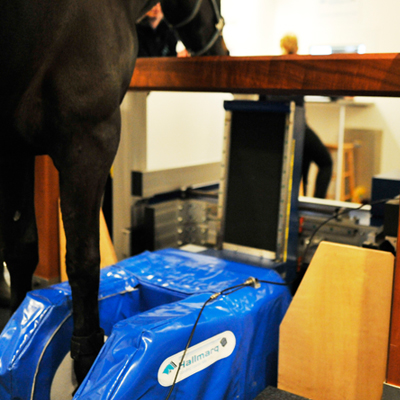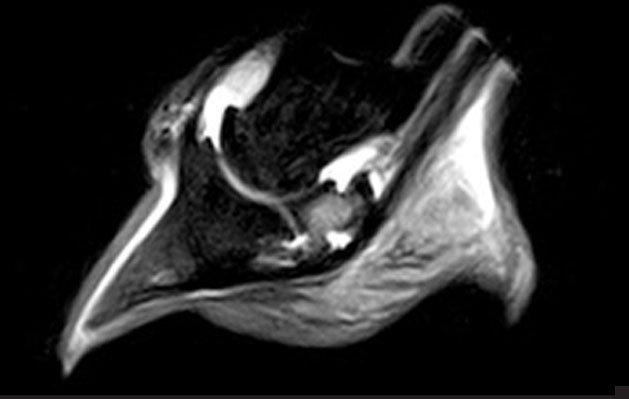What to expect when your horse has a standing MRI.
Using the right tools early in the lameness process to get a definitive diagnosis will allow you and your vet to devise the right treatment plan, hopefully getting your horse back to full fitness as quickly as possible.
The clear images from MRI allow vets to make an accurate and precise diagnosis in 90% of cases.
If you’ve considered requesting an MRI for your horse but wondered what actually happens, an MRI scan will usually include the following steps:
-
Initial examination
On arrival for the scan the horse’s overall health is evaluated for sedation and our clinic vets will briefly examine the horse’s lameness.
-
Horse shoes
Metal horse shoes would degrade the quality of the images if left on as the MRI scanner contains a large magnet. Normally just two shoes, on the leg to be scanned and the adjacent leg, are removed.
-
Sedation
The standing MRI eliminates the need for anaesthesia, so removes the mortality risk and often allows for day patient scheduling. Top up doses may be applied during the scan, either on a drip or via a catheter in the horse’s jugular vein.
-
 Positioning
PositioningThe horse is walked into the MRI scanner, with the lame leg placed between the poles of the magnet. A radiofrequency coil is fitted around the injury site and the operator makes careful adjustments to ensure the horse and magnet are both in the right place.
-
The Scan
 The scan takes around 2 – 4 hours, producing around 300-500 images at multiple angles of the limb or hoof, highlighting different types of tissue and pathology.
The scan takes around 2 – 4 hours, producing around 300-500 images at multiple angles of the limb or hoof, highlighting different types of tissue and pathology. -
Recovery
After the scan the horse is given time to recover from the sedation, and in most cases can return home the same day.
-
Interpretation
One of our specialists responsible for scanning will carefully review the images to arrive at an opinion about likely pathology or injury. The findings are then communicated to you or your vet.
-
Treatment
The findings from the scan will enable an accurate diagnosis to be made. With precise information available the vet can prescribe the best possible treatment for the horse.
Should your horse be suffering with lameness or poor performance issues, please discuss with your usual Oakhill Equine Vet or call the practice on 01772 861300.
If you wish to be referred to us from another veterinary practice, please contact your own veterinary surgeon in the first instance.
